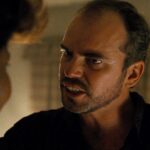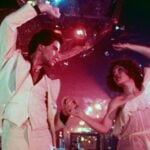C
Chris*Liberti
I am trrying to find out if anyone is still shooting films in large negative formats like 65 or 70mm? (not including IMAX). If so what films have been shot in these formats recently?
By the way, what ever happened to Mr. Branagh?He was in two movies last year, Harry Potter and the Chamber of Secrets as Gilderoy Lockhart and Rabbit-Proof Fence. He was also the leading man in a TV movie that was shown on A&E called Shackleton.
What effect does shooting in large formats have on CGI?In short: More pixels.
Yes. The non-IMAX portions of "The Dark Knight", to name one.
True anamorphic filmmaking seems to be less popular these days, as the special effects wizards have an easier time doing their work on Super35 (a format to which I agree, there is nothing super about it).
But anamorphic/scope films are still being made. A good resource to look at is the website for the ASC (American Society of Cinematographers). Their website has most of the content from the magazine, it would seem, and their features on each film list not only the format the film was shot in, but also which lenses were used, what film stock it was shot on, what post-production processes and facilities were used, what film stock the release prints were made on, and what lab did the work.
I was hoping that Indy 4 would be shot anamorphically before it came out, and was pleased to find out that was the case. Kaminski said that he studied Doug Slocombe's photography on the other three films and wanted to keep this one in line with the others, so I wouldn't be surprised if that was reason -- or even if Spielberg insisted on anamorphic photography for that reason. And this is totally off-topic, but I really enjoyed Indy 4




